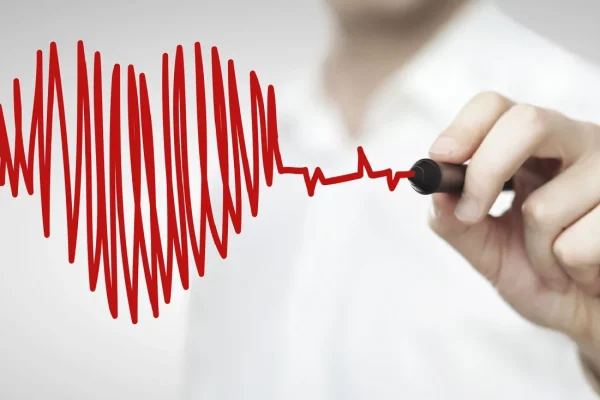
11 Oct Small but Dangerous: What is Prostate Cancer and how can I prevent it?
Small but Dangerous: What is Prostate Cancer and how can I prevent it?
By Island Hospital | Oct 11, 2019 6:30:09 PM
The prostate gland is often disregarded due to its small size. However, it plays a very big role in a man’s reproduction system and failing to address problems in the prostate gland can lead to can lead to other health complications health complications.
According to the World Cancer Research Fund, prostate cancer is listed as one of the most common forms of cancer in men, making up 14.5% of all cancers reported worldwide in 2018. Therefore, it is important for you to immediately recognise the symptoms of prostate cancer when it arises.
Located between the bladder and penis, the prostate gland is a walnut-shaped organ that, though not important for one’s survival, plays a vital role in reproduction. Together with the seminal vesicles, it produces seminal fluid rich with zinc, citrate, and fructose which provide energy for the sperm to make its journey to the egg in order to allow fertilisation to take place. This seminal fluid also contains antibodies that help prevent bacteria and pathogens from attacking the urinary tract and sperm.
Like most types of cancer, the exact cause behind prostate cancer still remains unknown to doctors. However, it is largely agreed upon that gene mutation is the main possible reason as certain genes determine when our cells grow, divide into more cells, and die. When mutation takes place, cells in the prostate will begin to grow at an uncontrollable rate and become abnormal. As the cancerous and abnormal cells continue to increase and divide, a tumour eventually forms and may spread to other parts of the body.
Here are a few factors that can possibly identify whether you have a higher risk of contracting prostate cancer:
- Age
As you increase in age, so does your risk for prostate cancer. Research has shown that more than 80% of men aged 65 or older are diagnosed with prostate cancer.
- Family history
If you have family members who have had prostate cancer, have genes that increase the risk of breast cancer, or have strong history of breast cancer, then your chances of getting prostate cancer might be higher.
- Obesity
While the link between diet and prostate cancer is still being studied, it has been suggested that men who consume lots of red-meat and high-fat dairy products, or eat fewer fruits and vegetables have a higher chance of getting prostate cancer.
While most men may not experience any symptoms or signs in its early stage, it does not mean that prostate cancer is to be taken lightly. Consult your doctor if you notice the following symptoms:
- Burning sensation or pain during urination
- Difficulty urinating, either having trouble starting or stopping urination
- More frequent urges to urinate, especially at night
- Loss of bladder control
- Decreased flow of urinary stream
- Blood in urine (hematuria)
- Blood in semen
- Erectile dysfunction
- Painful ejaculation
If left untreated, prostate cancer may spread and form tumours in neighbouring bones, organs, and even the spine. This can lead to a host of new symptoms such as:
- Swelling of legs/pelvic area
- Numbness/pain in the hands, feet, or legs
- Chronic bone pain, which may lead to fractures
Before undergoing a treatment plan for prostate cancer, a few factors will be considered such as your overall health, the aggressiveness of the cancer, how much it has spread, and the side effects that a certain treatment may bring. There are several types of treatment for prostate cancer as listed below:
- Active surveillance
If your condition is termed as a low-risk prostate cancer, you will be required to undergo a series of blood tests, rectal exams, and biopsies as a means to monitor the progression of your cancer. Active surveillance is usually recommended for those suffering a form of prostate cancer that does not show symptoms, grows slowly, or is confined within the prostate only. However, this method has the risk of allowing the cancer to grow, making it harder to cure in the future.
- Radical prostatectomy
In cases where the cancer has become aggressive, a surgical procedure to remove the prostate gland along with some surrounding tissue and lymph nodes may be prescribed. There are two main methods in conducting the surgery, namely robotic prostatectomy and retropubic surgery.
For robotic prostatectomy, the surgical tools are attached to a robot and are subsequently placed into your abdomen througAre there any side effects of prostate cancer treatments?
- Ih several small incisions, whose movements are controlled by the surgeon using a console. This makes it easier for him/her to conduct highly precise movements that would not be possible with a normal surgical procedure.
- As for retropubic surgery, the surgeon makes an incision in your lower abdomen, starting from your navel to slightly above your pubic bone. After dissecting the prostate gland from the surrounding blood vessels and nerves, the surgeon will proceed to remove the prostate completely along with nearby tissue before stitching up the wound.
- Radiation therapy
In a nutshell, this method involves using high-powered energy to kill off the cancer cells, where it can be done in two ways – external beam radiation and brachytherapy. During an external beam radiation procedure, you will be made to lie down on a table while a machine moves around directing energy beams (X-rays or protons) into your prostate cancer. Brachytherapy, on the other hand, is a procedure where rice-sized radioactive seeds are placed into your prostate tissue, where it slowly releases low-dose radioactive energy over a long period of time and eventually stops emitting radiation.
- Immunotherapy
This is a form of treatment where your own immune system is used to fight off the cancer cells. Some immune cells will be extracted from your body, where it will be genetically engineered in a lab to combat prostate cancer. Once completed, it will be injected back into your body through a vein. Nevertheless, this process is expensive and requires multiple rounds of treatment.
- Hormone therapy
Instead of focusing on the prostate gland, hormone therapy mainly targets limiting the production of testosterone, a hormone which aids in the growth of cancer cells. Cutting off the supply of testosterone may come in the form of medications that stop the testicles from making testosterone (e.g. Lupron and Zoladex) or medications that prevent testosterone from reaching the cancer cells (e.g. Casodex). In some cases, the testicles will be surgically removed as a more drastic measure to starve cancer cells of testosterone.
Hormone therapy is usually recommended for those who are already in an advanced stage as a way to slow down the tumour’s growth. As for those in the early stage, this treatment may help in reducing the tumour’s size before undergoing radiation therapy, which increases its success rate.
- Cyrosurgery
Despite the name, cryosurgery does not require you to go under the knife in order to stem the growth of cancer cells. Rather, small needles are inserted into your prostate with the guidance of ultrasound images, where cold gas is then released through the needles and freezes the surrounding tissues, while another gas is then placed into the needles where it reheats the tissue. While repeated cycles of emitting cold and hot gas do kill the cancerous cells, some healthy cells may be sacrificed as well. Cyrosurgery is commonly used for men who experience little success with radiation therapy.
Whether you are experiencing an early or advanced stage of prostate cancer, there will bound to be an emergence of side effects while undergoing treatment. Some of the side effects include:
- Erectile dysfunction
- Urinary incontinence
- Fatigue
- Infertility
- Hot flushes
- Weight gain
- Osteoporosis
- Reduced libido
- Painful and frequent urination
- Bowel problems
Should you have any concerns regarding your treatment journey, do not hesitate to consult our doctor to find out more about the risks involved.
Like any disease, prostate cancer can be prevented with a few simple changes to your lifestyle. Here are some ways to do so:
- Ensure a healthy diet
Incorporate more fruits, vegetables, and grains into your diet instead of high-fat foods. While it has yet to be proven that eating healthily can prevent prostate cancer, a healthy diet can improve your overall health. If you are a smoker, you should consider stopping your smoking habits.
- Exercise regularly
Regular exercise helps in maintaining your weight, improving your health, and lowers your risk for prostate cancer. If you are new to it, start off slow and gradually lengthen your exercise time.
- Talk to a doctor about increased risk of prostate cancer, especially if you are over 50 years old or have a family history of this disease
The aim of visiting your doctor is to diagnose prostate cancer as early as possible. When detected early, it can potentially be cured. This can be done with a simple biopsy-taking examination of the prostate such as the digital rectal exam (DRE) and a Prostate-Specific Antigen (PSA) blood test.
During a DRE procedure, the doctor will insert a gloved, lubricated finger through your rectum and feel your prostate to determine its size and whether there are any abnormalities with it. This procedure takes only a few minutes to be done.
As for a PSA blood test, some of your blood will be drawn and sent to the lab to determine the amount of PSA produced by your prostate gland. Although there is no such thing as a “normal” PSA level, most men who suffer from prostate cancer tend to have higher PSA levels. If you have a PSA level ranging from or exceeding 4 to 10ng/ml, talk to our doctor immediately.







